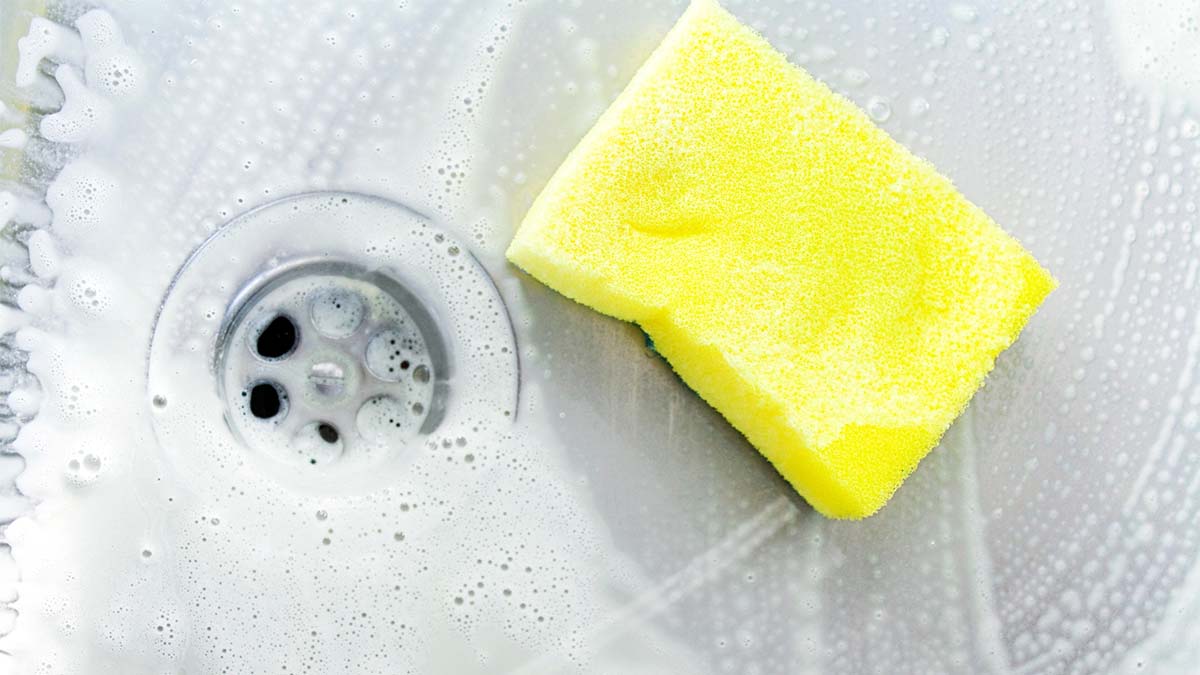
When you think of the most germy item in your home, your kitchen sponge probably isn’t the first object to come to mind. Surely, the toilet seat or a doorknob would seem more germ-laden. Surprisingly, it’s the humble kitchen sponge that harbors the most bacteria. Thankfully, this guide will walk you through the best ways to clean and care for your kitchen sponge.
A new study published in Scientific Reports revealed that kitchen sponges harbor a staggering 54 billion bacterial cells per cubic centimeter. To put that in perspective, this density of bacteria is comparable to what’s found in a typical toilet bowl after use. Shocking, right?
“Despite common misconception, it was demonstrated that kitchen environments host more microbes than toilets,” the researchers noted. “This was mainly due to the contribution of kitchen sponges, which were proven to represent the biggest reservoirs of active bacteria in the whole house.”
It’s unsettling to think that something we use to clean dishes could be so contaminated. However, considering how often sponges come into contact with water, food particles, and grease, it makes sense that they provide an ideal environment for bacteria to thrive.
Not all bacteria are harmful
While it may sound alarming, it’s important to remember that not all bacteria are harmful. Bacteria are everywhere — including on our skin and inside our bodies. The real issue is the overgrowth of harmful bacteria, such as E. coli or salmonella, which can cause illness. Proper care of your kitchen sponge is essential to keep bacterial growth in check and ensure your cleaning tools aren’t doing more harm than good.
How to properly clean a kitchen sponge
If you’ve been boiling or microwaving your kitchen sponge, you might want to rethink your cleaning strategy. The same study found that these methods were ineffective at significantly reducing bacteria levels. So, what’s the best way to keep your sponge clean and safe to use?
1. Replace sponges regularly
The simplest solution is to replace your kitchen sponge frequently. Aim to swap it out every one to two weeks, especially if you use it daily. This practice minimizes the buildup of harmful bacteria and prevents you from spreading germs across your kitchen surfaces.
2. Soak in bleach solution
Between replacements, disinfect your sponge using a bleach solution. Mix ¾ cup of bleach with one gallon of water, and let the sponge soak for five minutes. A separate study found this method eliminates 99.9 percent of harmful bacteria, including E. coli and salmonella.
3. Use dishwashing alternatives
Consider using silicone scrubbers or antibacterial dishcloths as an alternative to traditional sponges. These materials are easier to sanitize and less likely to trap bacteria.
Though your kitchen sponge may be a breeding ground for bacteria, maintaining proper cleaning habits can mitigate the risks. By disinfecting sponges regularly and replacing them often, you can ensure your kitchen stays as clean as possible. After all, a little preventative care goes a long way in keeping your home safe and sanitary.




